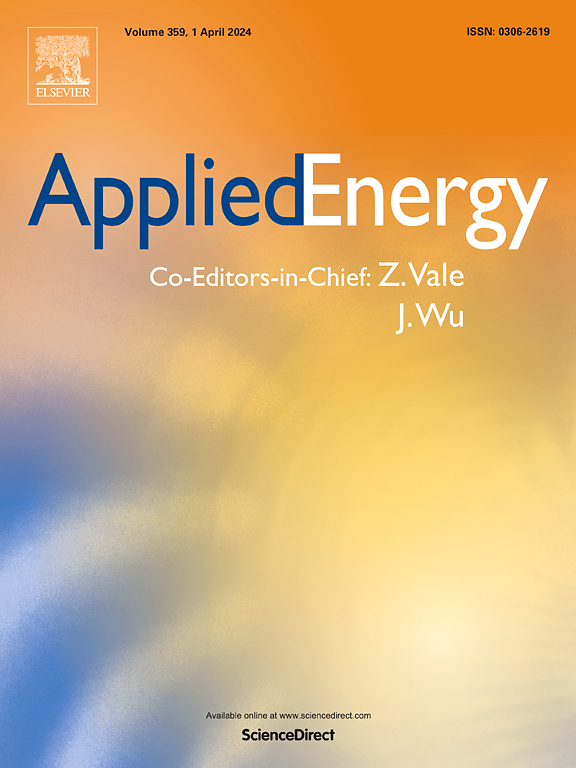配电网中的数字与电网投资:通过系统动力学的知情决策
IF 11
1区 工程技术
Q1 ENERGY & FUELS
引用次数: 0
摘要
估算与数字化投资以及电网加固、扩建和改造相关的成本和收益,对于配电网的有效优先排序和决策至关重要。在能源转型的背景下,新的投资对于适应分布式能源,如可再生能源和电动交通,同时满足不断增长的电力需求至关重要。这些投资涉及分配系统运营商(dso)和国家监管机构(NRAs)之间的复杂权衡。为了提高理解数字化、电网投资及其经济和社会效益之间相互依赖关系的透明度,本研究引入了一种系统动力学建模方法。所提出的模型模拟了DSO业务,结合了nra和最终用户之间的因果关系。利用2012年至2021年葡萄牙主要DSO和NRA的历史数据,对该模型进行了严格验证。在验证之后,敏感性分析调查了资本支出的变化如何影响dso的净现值(NPV)、它们的总允许收入、供应质量改善和最终用户电价。此外,情景分析评估了不同投资水平对dso和最终用户的影响,考虑了可靠性、单位投资成本、电力需求和监管框架等因素。研究结果表明,数字化大大提高了电网性能和dso的净现值,同时对最终用户电价的影响最小。这一结果在不同的投资水平和技术组合中保持一致。最终,这种基于模型的方法为nra和dso提供了评估数字化和电网投资净收益的综合工具。本文章由计算机程序翻译,如有差异,请以英文原文为准。
Digital versus grid investments in electricity distribution grids: Informed decision-making through system dynamics
Estimating the costs and benefits associated with investments in digitalization, as well as grid reinforcement, expansion, and renovation, is crucial for effective prioritization and decision-making in electricity distribution grids. In the context of the energy transition, new investments are essential to accommodate distributed energy resources, such as renewable energy and electric mobility, while meeting rising electricity demands. These investments involve complex trade-offs for distribution system operators (DSOs) and national regulatory authorities (NRAs). To enhance transparency in understanding the interdependencies between digitalization, grid investments, and their financial and societal benefits, this study introduces a system dynamics modeling approach. The proposed model simulates the DSO business, incorporating causal relationships with NRAs and end users. Using historical data from the primary Portuguese DSO and NRA spanning 2012 to 2021, the model is rigorously validated. Following validation, a sensitivity analysis investigates how variations in capital expenditures influence the net present value (NPV) of DSOs, their total allowed revenue, quality of supply improvements, and end-user tariffs. Additionally, a scenario analysis assesses the impact of different investment levels on DSOs and end users, considering factors such as reliability, unit investment costs, electricity demand, and regulatory frameworks. The findings reveal that digitalization substantially enhances grid performance and the NPV of DSOs while having a minimal impact on end-user tariffs. This outcome remains consistent across various investment levels and technology combinations. Ultimately, this model-based approach offers NRAs and DSOs a comprehensive tool for evaluating the net benefits of digitalization and grid investments.
求助全文
通过发布文献求助,成功后即可免费获取论文全文。
去求助
来源期刊

Applied Energy
工程技术-工程:化工
CiteScore
21.20
自引率
10.70%
发文量
1830
审稿时长
41 days
期刊介绍:
Applied Energy serves as a platform for sharing innovations, research, development, and demonstrations in energy conversion, conservation, and sustainable energy systems. The journal covers topics such as optimal energy resource use, environmental pollutant mitigation, and energy process analysis. It welcomes original papers, review articles, technical notes, and letters to the editor. Authors are encouraged to submit manuscripts that bridge the gap between research, development, and implementation. The journal addresses a wide spectrum of topics, including fossil and renewable energy technologies, energy economics, and environmental impacts. Applied Energy also explores modeling and forecasting, conservation strategies, and the social and economic implications of energy policies, including climate change mitigation. It is complemented by the open-access journal Advances in Applied Energy.
 求助内容:
求助内容: 应助结果提醒方式:
应助结果提醒方式:


